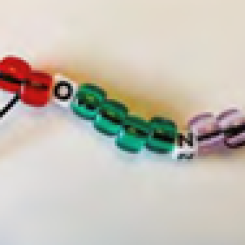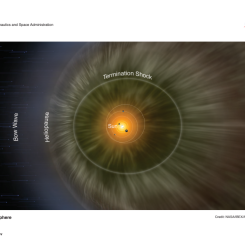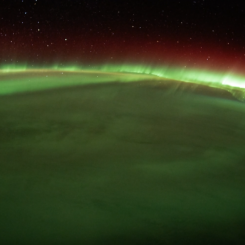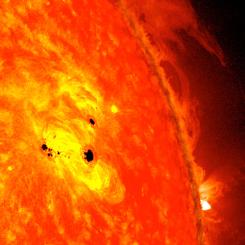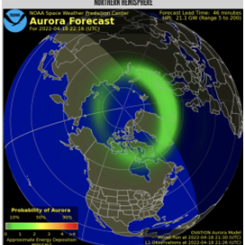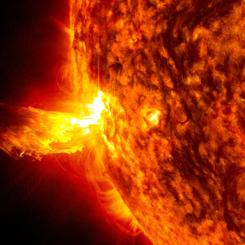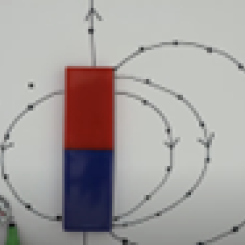Mini Lesson/Activity
Aurora vs. Airglow
Overview
In this activity you will examine the difference between aurora and airglow, while learning about NASA’s ICON Mission.
Student Directions
Remember to never look directly at the Sun without proper safety equipment.
Provide Context:
- When the solar wind interacts with gases in the atmosphere, ionization occurs, causing the gases in the ionosphere to glow.
- This is similar to how the neon lights that you see in store windows work. Electricity excites the different gases in the neon light tubes; different gases glow different colors.
- The Earth’s atmosphere is made up of 78% nitrogen, 21% oxygen, and a small amount of argon, carbon dioxide, methane, and some other trace amounts of gases.
- When oxygen atoms and molecules collide, they emit the visible green and red light of the aurora. When nitrogen atoms and molecules collide, they emit the visible purple and blue light of the aurora.
- If you are out at night, hoping to catch a glimpse of the aurora, make sure not to confuse aurora with airglow.
- An aurora is created when the solar wind, a gusty stream of charged particles from the Sun, interacts with Earth’s magnetic field.
- Airglow, which also occurs in the ionosphere, and produces similar light displays as an aurora, is caused by the everyday solar radiation we receive from the Sun. Airglow is not associated with increased solar activity, as aurora are.
- Working together with other missions, data collected from NASA’s Ionospheric Connection Explorer (ICON) Mission contributes to scientists’ understanding of the atmosphere, planetary weather, space weather, aurora, and the Sun.
- NASA’s ICON mission studies the frontier of space: the dynamic zone high in our atmosphere where Earth weather and space weather meet. This mission helps determine the physics of our space environment and pave the way for mitigating its effects on our technology, communications systems, and society. ICON studies both aurora and airglow.
Watch:
Watch the Meet ICON: NASA’s Airglow Explorer video to learn more about how NASA’s ICON Mission studies the ionosphere and airglow.
-
Create a Venn diagram about how airglow is similar to and different from aurora.
Thumbnail image credit: NASA GSFC/Mary Pat Hrybyk-Keith
Teacher Note
Teachers, these mini lessons/student activities are perfect "warm up" tasks that can be used as a hook, bell ringer, exit slip, etc. They take less than a class period to complete. Learn more on the "My NASA Data What are Mini Lessons?" page.
Teachers who are interested in receiving the answer key, please complete the Teacher Key Request and Verification Form. We verify that requestors are teachers prior to sending access to the answer keys as we’ve had many students try to pass as teachers to gain access.
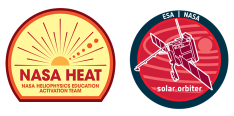
Disciplinary Core Ideas:
- PS2B: Types of Interactions
- PS4A: Wave Properties
- PS4B: Electromagnetic Radiation
- ESS1A: The Universe and its Stars
Crosscutting Concepts:
- Patterns
- Cause and Effect
- Structure and Function
Science and Engineering Practices:
- Developing and Using Models


